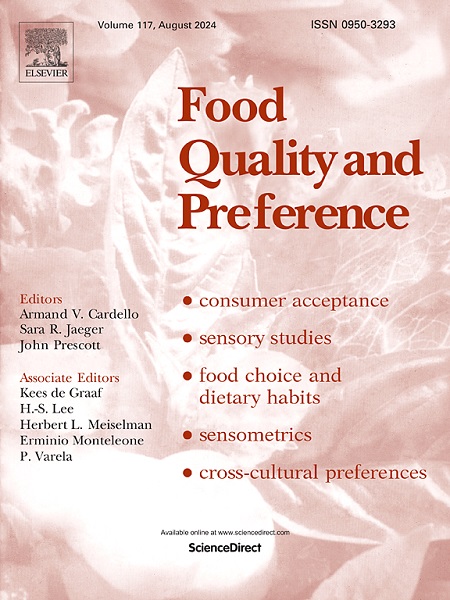Front-of-pack labels and young consumers: An experimental investigation of nutrition and sustainability claims in Chile
IF 4.9
1区 农林科学
Q1 FOOD SCIENCE & TECHNOLOGY
引用次数: 0
Abstract
A better understanding of youth as autonomous consumers in the food market is needed to guide food and nutrition policies to achieve healthier and sustainable diets because they interact with the food environment to obtain, prepare, and consume food and beverages. Compared to other age groups, evidence on children and adolescents (youth) purchasing behavior and front-of-package (FOP) labeling is limited. The objective of the study was to assess youth's purchasing behavior by conducting an online discrete choice experiment (DCE) in Santiago, Chile. We assessed four different food attributes: price, FOP nutrition warning label, FOP eco-label, and type of product (i.e., yogurt, cookie, apple). Data were analyzed using mixed logit models complemented with latent class logit models to further explore heterogeneity in preferences. A total of 329 youth aged 10–14 years participated in the study. Our results reveal that youths' purchasing behavior is mostly determined by price, followed by product type and environmental sustainability as measured by the FOP eco-label; responsiveness to price was not moderated by whether the youth received pocket money from a family member regularly. We further identified five classes (groups) of youth consumers where some exhibited preference for health and nutrition attributes, environmental sustainability, or price. Our findings provide a better understanding of youth as diverse and autonomous consumers and suggest at least some youths are responsive to labeling interventions.
求助全文
约1分钟内获得全文
求助全文
来源期刊

Food Quality and Preference
工程技术-食品科技
CiteScore
10.40
自引率
15.10%
发文量
263
审稿时长
38 days
期刊介绍:
Food Quality and Preference is a journal devoted to sensory, consumer and behavioural research in food and non-food products. It publishes original research, critical reviews, and short communications in sensory and consumer science, and sensometrics. In addition, the journal publishes special invited issues on important timely topics and from relevant conferences. These are aimed at bridging the gap between research and application, bringing together authors and readers in consumer and market research, sensory science, sensometrics and sensory evaluation, nutrition and food choice, as well as food research, product development and sensory quality assurance. Submissions to Food Quality and Preference are limited to papers that include some form of human measurement; papers that are limited to physical/chemical measures or the routine application of sensory, consumer or econometric analysis will not be considered unless they specifically make a novel scientific contribution in line with the journal''s coverage as outlined below.
 求助内容:
求助内容: 应助结果提醒方式:
应助结果提醒方式:


